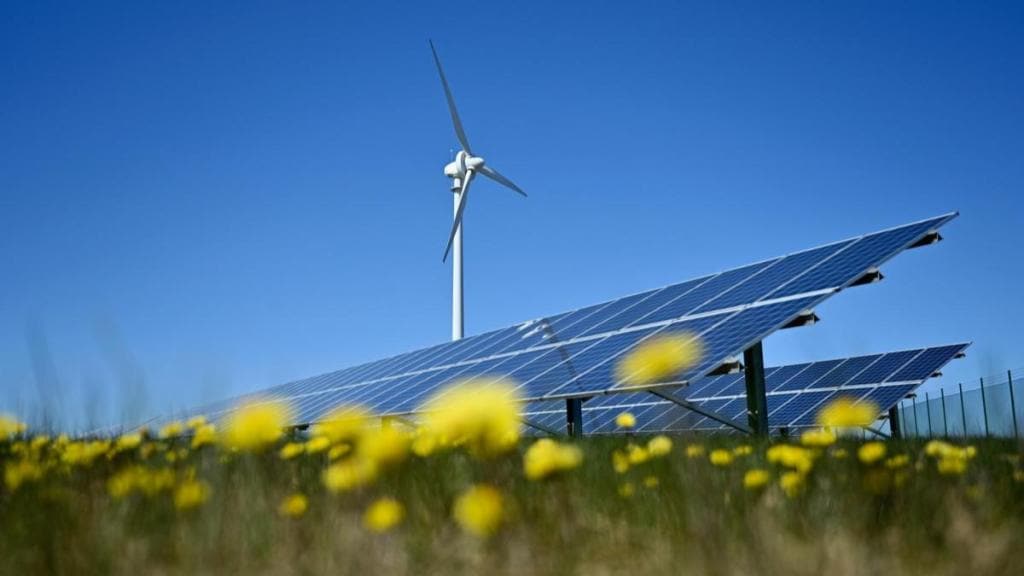By Rajat Verma & Laveesh Bhandari,
Significant fiscal implications are bound to arise as countries roll out their energy transition plans. India has committed to achieving its net zero target by 2070, and also set specific goals for 2030. Renewable energy, however, does not generate the same kind of tax and non-tax revenues that fossil fuels do. Petroleum products, for instance, generate revenues in the form of excise for the central government and value added tax (VAT) for the states. Coal, on the other hand, generates goods and services tax (GST). Both generate royalties as well if they are mined/extracted in India. Together these constituted close to one-third of the total indirect tax collections in India in 2019-20. Over time, however, as the share of renewable energy increases, fossil fuels will naturally generate a lower share of revenues. This underscores the need to explore alternative revenue sources that will not only compensate for the loss of revenue but also support energy transition objectives in a fair and progressive manner.
There are many alternatives, ranging from increasing tax rates to rationalising taxation to imposing new forms of taxes. We looked at many of these possible alternatives available for India. There are some rather infeasible ones, such as increasing direct tax rates; as historical evidence suggests, increasing the rates does little to increase tax revenues in India. Broadening the income tax rates by inclusion of agricultural incomes is yet another difficult proposition, given the landscape of the political economy. Additionally, the corporate taxes are also competitive with other countries and altering these may affect investments in India.
We thus examined the possibilities under the indirect taxes category and assess issues related to revenue continuity over a long period of time, state autonomy or state governments’ control over their own tax rates and revenues, institutional challenges in imposing new taxes, and the distributional impacts of these changes. We analyse and explore the potential of replacing fossil fuel taxes with other tax options such as carbon taxes on fossil fuel emissions, user taxes (electricity taxes and distance travelled taxes), and conventional alternatives such as a proportionate increase in the GST rates. Taxation alternatives included carbon taxes on emissions of coal, petroleum and a combination of these two; user taxes such as increasing electricity duties, a new form of taxation called distance travelled tax, and a combination of the two; as well as a proportionate increase in the GST rates.
The replacement of fossil fuel revenues with other forms will affect household welfare by altering their tax burden and will also have differing macroeconomic and environmental effects. We examined these effects on parameters such as real gross domestic product (GDP), prices, and emissions intensity, and arrived at three main findings.
First, implementing a carbon tax on coal emissions boosts real GDP and lowers the intensity of emissions the most, as emissions from the consumption of coal lead to maximum pollution in India. However, it is regressive in the sense that the poor households will have to shoulder a disproportionate burden to their incomes. While such a tax could accelerate the energy transition, it won’t solve the long-term fiscal challenge of closing the revenue gap, as the use of fossil fuels and, therefore, revenues from carbon taxes will gradually decline. The regressive problem can be taken care of through minor direct cash transfers to the poorest segments.
Second, user taxes can be a potential solution for retaining the autonomy of the states as the electricity duties are constitutionally within their ambit while the mileage taxes can be administered by the Centre under Article 248. However, these taxes are inefficient as they have a significant negative impact on real GDP. This is because mileage taxes affect the prices the most. Transport and electricity lie at the core of economic activity, and imposing user taxes will have a domino effect on prices.
Third, a proportionate increase in GST significantly reduces emissions and has moderate effects on both equity and real GDP. This is because replacing fossil taxes with changes in GST rates affects prices the least when compared with the other alternatives. However, GST does not provide individual state governments much autonomy over their own taxes, and therefore they are unlikely to agree to replace fossil fuel taxes with a general increase in GST.
It is critical for India to move to a carbon taxation regime (or alternatively a well-structured carbon emissions trading regime) as it will send a strong price signal across the country, for moving production to a more environmentally benign mechanism. Such a price signal will, however, not address the long-term challenge of finding other revenues to address the budgetary gaps that will be visible within a few years as India’s dependence on fossil fuels reduces.
For that problem, we found that there are no clear-cut answers, and each potential solution has a different challenge. For this to be addressed, India needs to initiate a conversation among various internal stakeholders on what is the most suitable mechanism for the country. We believe that eventually a combination of taxes and other generation tools will be used to cover the gap. This will emerge out of a political-economic discourse that studies such as ours seek to inform. For the medium term, however, carbon taxes can achieve both goals; therefore, while political-economic processes find the long-term solution, a shorter more immediate solution remains carbon pricing.
Rajat Verma is associate fellow, and Laveesh Bhandari is president and senior fellow at the Centre for Social and Economic Progress (CSEP).
Disclaimer: Views expressed are personal and do not reflect the official position or policy of Financial Express Online. Reproducing this content without permission is prohibited.


